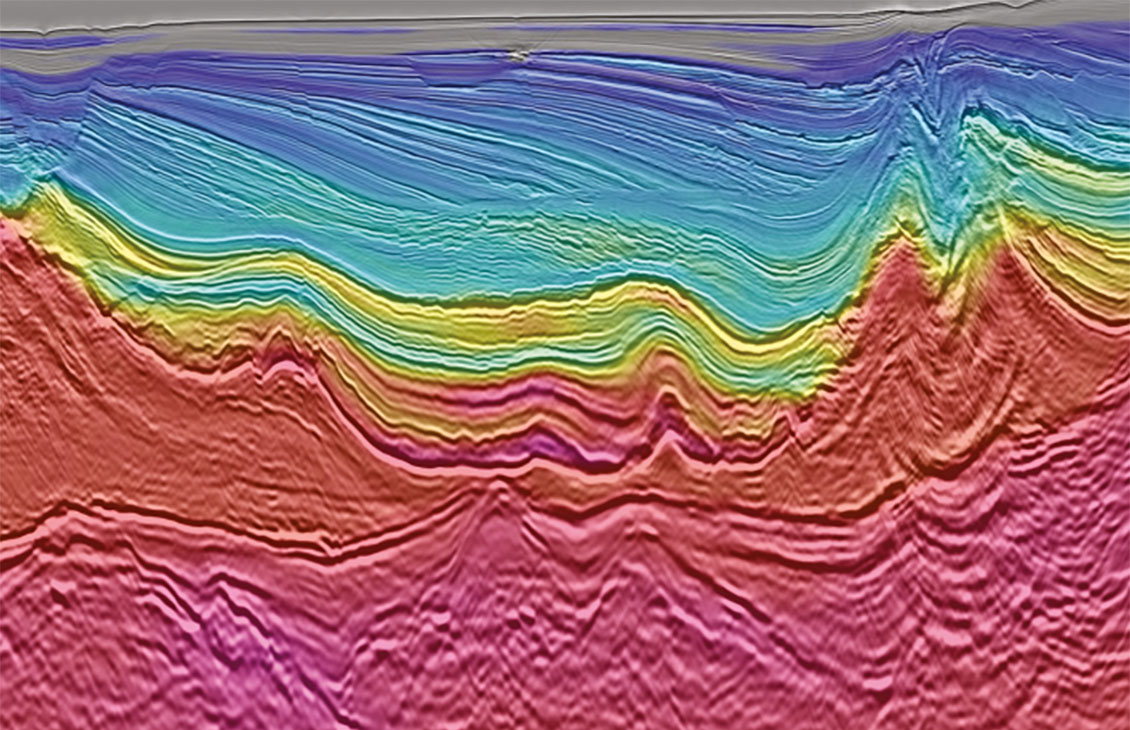Egyptian Red Sea
Opening a new exploration frontier
Unlocking new opportunities across highly prospective frontier basins.
Published: 07/14/2025

Published: 07/14/2025

Over the last decade, several factors have contributed to a significant decrease in discovered volumes, with reduced investment in exploration being chief among them. However, during the same period, global energy demand has continued to grow substantially. As new energy sources have not yet expanded sufficiently to meet this demand, new exploration is crucial to maintain steady production and ensure energy security.
New exploration and resulting greenfield projects can support a more sustainable energy industry by enabling the development of lower carbon and even carbon-neutral fields by integrating sustainability objectives from the outset. This approach ensures that new fields are designed to minimize environmental impact, including implementing state-of-the-art methane mitigation strategies. Additionally, exploration activities include searching for storage spaces for CCUS, which can be conducted independently or alongside traditional oil and gas exploration. By utilizing advanced technologies like high-performance computing and ocean bottom nodes (OBNs), exploration can provide more accurate subsurface imaging, leading to better decision-making and helping reduce environmental disruption.
Africa has become a focal point for exploration due to several factors. Recent discoveries have sparked significant interest from organizations of all sizes. Additionally, there has been a strategic shift by many regulators, driven by the need to discover new reserves, maintain production levels, and ensure energy security. This has made the regulatory and legislative environment more favorable to exploration than it has been in a decade. Increased exploration has the potential to significantly boost economic prosperity, meaning that coming together to increase exploration can create a highly mutually beneficial scenario for countries, investors, and service providers across Africa.
Recent discoveries across Africa have opened up new plays and have the potential to be explored right across the African margin. These discoveries are driving exploration interest among majors, large independents, and smaller companies looking to take positions. Their success highlights the untapped potential within Africa's underexplored areas, particularly within deep water environments which hold the highest potential.
The geological challenges in Africa are varied and complex. In West Africa, issues with poor illumination due to complex salt overburden are prevalent, in Gabon and Angola. While in Nigeria challenges with shale tectonics are seen. In East Africa, the geology is characterized by passive margin geology, with abundant channels and rapid sedimentation leading to increased pore pressure, which can impact drilling operations. In South Africa, strong ocean currents can create noisy datasets during acquisition, resulting in issues that require noise attenuation technology to overcome.
SLB employs advanced technologies such as full waveform inversion (FWI) and ocean bottom nodes to address these challenges. FWI creates accurate velocity models by fitting simulated data to recorded data, improving the imaging of subsurface structures. This technology is particularly useful in areas with complex overburden, such as the salt canopies seen in West Africa. OBN is a method of acquiring seismic data with long offsets and full azimuth, providing better data for FWI. This technology is increasingly being used for large-scale exploration in complex geological areas, enabling efficient and high-quality data acquisition to unlock exploration potential.
Yes, these technologies can be applied to revitalize legacy datasets. Techniques such as elastic FWI (EFWI) can extract more accurate and detailed data from existing datasets, ensuring that previously acquired data doesn’t just sit on the shelf but delivers significant new value.
Investment in technology and people is crucial for the industry to thrive. With advanced technology, we can unlock resources faster and more efficiently. High-performance computing (HPC) and innovative seismic data acquisition methods, like ocean bottom nodes, provide clearer subsurface images, for better decision-making and higher success rates in drilling.
On the people side, the industry faces a continued decline in those entering the geoscience field, making it essential to develop and retain top talent. Partnering with academia to train new talent ensures a skilled workforce ready to tackle complex challenges. Harnessing automation and AI enable us to streamline mundane tasks, freeing up geoscientists’ time so they can focus on using human creativity and ingenuity to solve the industry's toughest problems.
In essence, combining cutting-edge technology with a talented workforce creates a powerful synergy, driving exploration forward and ensuring sustainable development. It's all about leveraging collective intelligence to make smarter, faster, and more innovative strides in the field.
The global decline in conventional discovered volumes, particularly in liquid discoveries, underscores the urgency for new exploration strategies. New, high-quality seismic data has proven to drive exploration performance, with success rates for high-impact wells peaking around two years after the last seismic shot. And with ocean bottom acquisition now accounting for over 30% of all surveys globally, we’re seeing the evolution of seismic data acquisition methods. Advanced imaging techniques enabled by HPC are also delivering significant improvements in turnaround time and accuracy of imaging algorithms, while continuous technological development and innovative survey designs have enabled large-scale ocean bottom node (OBN) acquisition, resulting in a step-change in image quality. The use of automated full waveform inversion (FWI) reduces imaging time from months to weeks, resulting in faster and more accurate models with minimal human intervention. Elastic FWI-derived reflectivity (FDR) further improves reservoir understanding by providing acoustic impedance values that closely match those from well logs.
SLB provides valuable subsurface data and insights, leveraging the significant experience of our technical teams alongside the latest seismic technology. We collaborate with regulators to illustrate the subsurface potential and assist them in engaging with investors.
Our continuous investment in technology, and our global network enable us to support our customers and partners in achieving their goals. We work with regulators and investors to unlock exploration potential through fit-for-purpose application of the latest technologies and workflows. Our global reach enables us to connect regulators with E&P companies globally.

